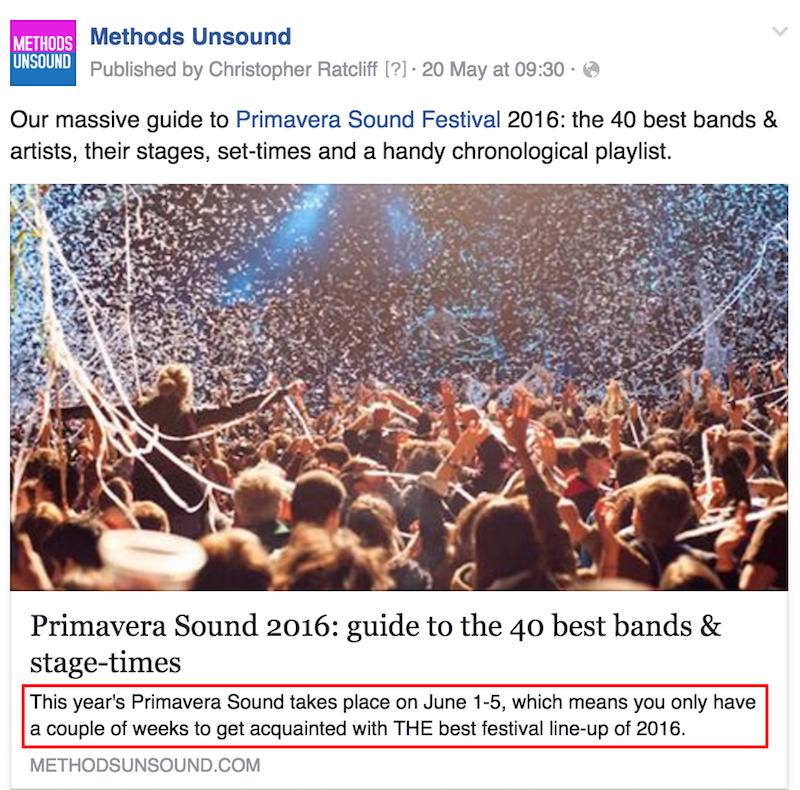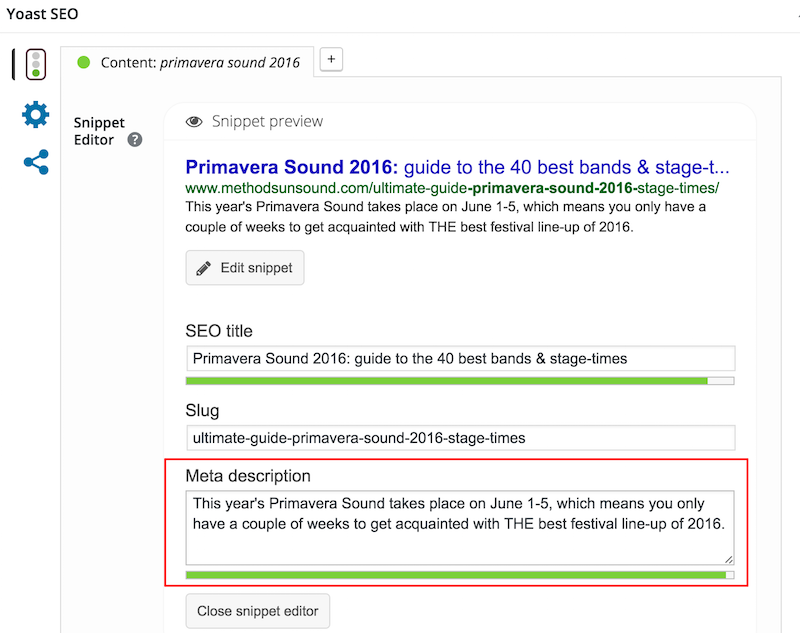What is a meta description? How do you write one? Why are meta descriptions important? Do they actually help with search engine optimisation? What are some good and bad examples?
Following on from our incredibly popular guide 22 SEO essentials for optimising your site, I thought I’d follow up the advice on meta tags and answer all of the above questions.
If you just want a quick guide to optimising meta descriptions, click here to jump to the checklist section.
For the rest of you, first lets talk about meta tags in general:
What are meta tags
As Kristine Schachinger described in our previous guide to meta tags back in 2012, meta tags are HTML elements that provide information about a webpage for search engines and website visitors.
There are two elements that must be placed as tags in the <head> section of a HTML document. These elements are:
- Title tag
- Meta description
We’ve already discussed title tags in a separate post last week, and now you’ve mastered that skill, let’s move straight into meta descriptions.
What is a meta description?
The meta description is the short paragraph of text placed in the HTML of a webpage that describes its content. The meta description will then appear under your page’s URL in the search results. This is also known as a snippet.

The meta description will also often appear when people share your articles across other websites and social channels.

Where do I add the meta description?
You can add a meta description in the <head> section of your site’s HTML. It should look something like this:
<head>
<meta name=”description” content=”Here is a precise description of my awesome webpage.”>
</head>
You should have complete control of your meta description in your CMS, particularly if you’re using WordPress.
If you use an SEO plug-in, such as Yoast, you can add a meta description to the ‘meta description’ section, and you can preview an example of how it will look in search engine results pages (SERPs):

Why is the meta description important?
A meta description can influence the decision of the searcher as to whether they want to click through on your content from search results or not. The more descriptive, attractive and relevant the description, the more likely someone will click through.
Are meta descriptions used as a ranking signal?
Google has stated that meta descriptions are NOT a ranking signal. But, again, the quality of the description will influence click-through rate, so it is very important to use this element wisely.
How to write a great meta description
Meta description checklist
- Keywords: do make sure your most important keywords for the webpage show up in the meta description. Often search engines will highlight in bold where it finds the searchers query in your snippet.
- Write legible, readable copy: this is essential. Keyword stuffing your meta description is bad and it doesn’t help the searcher as they’ll assume your result leads to a spammy website. Make sure your description reads like a normal, human-written sentence.
- Treat the meta description as if it’s an advert for your web-page: make it as compelling and as relevant as possible. The description MUST match the content on the page, but you should also make it as appealing as possible.
- Length: a meta description should be no longer than 135 – 160 characters long (although Google has recently been testing longer snippets). Any longer and search engines will chop the end off, so make sure any important keywords are nearer the front.
- Do not duplicate meta descriptions: As with title tags, the meta descriptions must be written differently for every page. Google may penalise you for mass duplicating your meta descriptions.
- Consider using rich snippets: by using schema markup you can add elements to the snippets to increase their appeal. For instance: star ratings, customer ratings, product information, calorie counts etc.
Good examples of meta descriptions
Here are a few examples of appealing meta descriptions that tick the above criteria.
‘best burgers in london’
Although the keywords are further down the description than perhaps they ought to be, the reason why this result is so appealing is the way the copy draws you in with emotive (and mouth-watering) language.

‘captain america civil war review’
This contains markup to show the star rating, the meta description is short, snappy and best of all, contains a call to action.

‘meta descriptions’
Things really are getting too meta. Here Moz has managed to exactly describe what a meta description is, within its own meta description, which is terribly helpful. Although do note that the snippet is a lot longer than normally allowed by Google.

Bad examples of meta descriptions
‘best burgers in london’
I’m not really interested in the history of rubbish burgers in London, I want to know where to get a tasty burger now! This meta description also fails to include the ‘best’ keyword from its own title tag.

‘captain america civil war review’
Although there is some rich snippet markup, the text is muddled and merely copies the title tag directly rather than offering a different enticement. It’s also far too long.

‘meta descriptions’
I’m not sure if there’s something blocking Google’s ability to crawl the webpage properly, but a website called ‘High Rankings’ should really know better than this…
The article How to write meta descriptions for SEO (with good and bad examples) was first seen from https://searchenginewatch.com
No comments:
Post a Comment